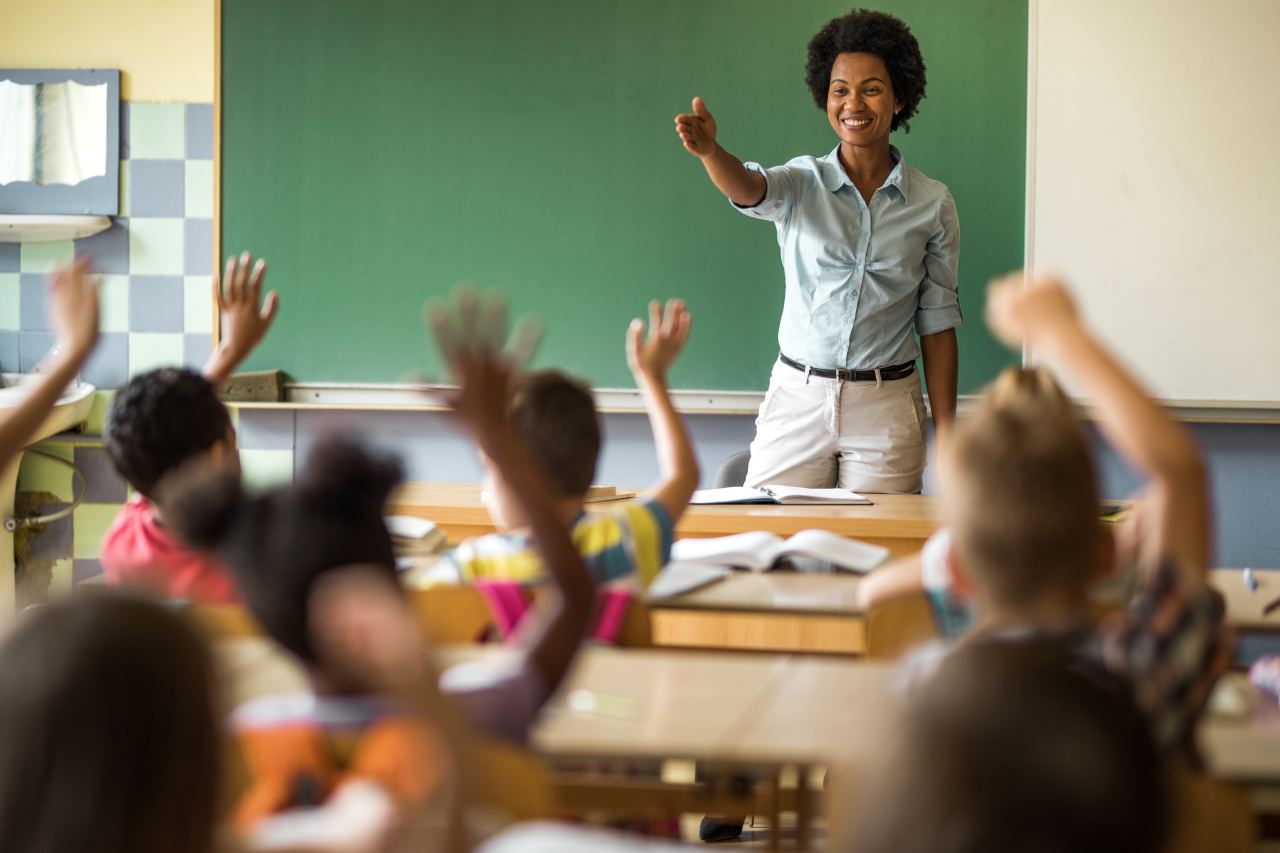Affordable Primary Science Tuition Singapore for All Learning Needs
Wiki Article
A Comprehensive Guide to the Various Learning Approaches in Key Scientific Research Guideline
The expedition of diverse learning approaches in main science instruction offers an opportunity for educators to boost pupil interaction and comprehension dramatically. By analyzing hands-on understanding methods, inquiry-based approaches, and collective techniques, we can recognize efficient techniques that provide to various finding out designs. Furthermore, the assimilation of innovation and separated instruction plays a critical role in promoting an inclusive environment. The question stays: just how can these methods be successfully applied in the classroom to maximize their influence? The response depends on a more detailed assessment of each strategy and its implications for mentor scientific research.
Hands-On Understanding Techniques
Hands-on knowing methods play a crucial duty in key scientific research instruction, involving students in active expedition and trial and error. These approaches permit students to connect directly with phenomena and products, fostering a deeper understanding of clinical principles. By utilizing manipulatives, versions, and real-life experiments, instructors develop a setting where pupils can observe, assume, and check their ideas.Such methods not only improve comprehension but also grow crucial thinking and problem-solving abilities. When pupils take part in tasks like developing easy devices, growing seeds, or performing chemical responses, they are motivated to ask questions and seek responses through their very own monitorings. This experiential method helps to debunk complicated scientific principles, making them much more relatable and accessible.
Furthermore, hands-on understanding promotes cooperation amongst peers, as students commonly operate in teams to carry out experiments or share findings. This team effort not only improves their knowing experience yet likewise creates vital social skills. Ultimately, integrating hands-on methods in key science direction fosters a lifelong love of knowing and interest regarding the all-natural globe, laying a strong foundation for future scholastic pursuits in scientific research and past.
Inquiry-Based Knowing
Inquiry-based understanding is an instructional method that urges students to ask concerns, explore phenomena, and build their very own understanding of clinical concepts. This technique changes the focus from typical teacher-led instruction to a more student-centered experience, where learners take the campaign in their instructional trip. By fostering interest, inquiry-based understanding promotes deeper involvement with the product, permitting students to explore topics in a significant context.In technique, this method usually entails hands-on experiments, observations, and crucial thinking activities that line up carefully with the scientific technique. Students are motivated to develop hypotheses, style investigations, and evaluate data, which cultivates vital skills such as problem-solving and logical reasoning. The function of the teacher in this framework is to facilitate exploration, leading students with the inquiry process while urging independent idea and partnership.
Furthermore, inquiry-based knowing nurtures a feeling of possession over the understanding procedure, inspiring students to seek expertise actively. This method not just improves understanding of scientific ideas however also cultivates a long-lasting love for knowing, equipping pupils with the skills necessary to browse an increasingly intricate globe.
Collaborative Knowing Approaches
Joint knowing techniques encourage students to involve in meaningful communications with peers, cultivating a shared obligation for their instructional end results. In primary science guideline, these strategies urge learners to collaborate to discover clinical principles, solve problems, and carry out experiments (primary science tuition Singapore). By taking part in team tasks, students can leverage diverse perspectives, allowing for richer understanding and retention of scientific understanding
One secret facet of joint understanding is the focus on communication skills. Students have to express their ideas, pay attention actively to others, and work out concepts, every one of which are vital proficiencies in both real-world and scholastic contexts. This advice social communication not just improves their understanding of scientific principles but additionally advertises team effort and dispute resolution skills.
Furthermore, collaborative learning often leads to raised inspiration and interaction. When students see the worth of their payments within a group, they are more probable to take possession of their knowing journey. Teachers can facilitate this procedure deliberately structured group jobs that line up with curriculum goals while offering guidance on efficient partnership techniques. Overall, including joint discovering methods in key scientific research instruction grows a dynamic understanding atmosphere that prepares pupils for future academic and social obstacles.
Modern Technology Integration in Science
The combination of modern technology in main scientific research instruction improves discovering experiences by giving innovative tools and sources that sustain numerous teaching methods, consisting of collaborative knowing - primary science tuition Singapore. Making use of electronic systems, simulations, and interactive applications enables pupils to involve deeply with clinical principles, promoting a more hands-on method to discoveringOnline research laboratories, for circumstances, make it possible for students to perform experiments securely and successfully, advertising inquiry-based understanding. These devices can imitate real-world clinical situations, enabling trainees to imagine complex processes that would be hard to replicate in a conventional classroom setup. Technology fosters communication and partnership amongst trainees, as they can share findings and function with each other on projects via on-line platforms.
Additionally, multimedia discussions and academic video clips can enhance lessons find out here now by dealing with varied discovering styles, making abstract principles a lot more available. Information analysis devices likewise empower trainees to collect and analyze scientific information, reinforcing critical assuming skills. On the whole, the tactical unification of innovation in key science guideline not only boosts engagement however also prepares pupils for a highly sophisticated culture, equipping them with necessary abilities for future clinical endeavors.
Separated Instruction Techniques
Set apart instruction techniques are crucial for dealing with the diverse demands of students in primary science education and learning. These approaches enable teachers to customize their training approaches to accommodate varying abilities, interests, and discovering designs within the class. By employing distinguished direction, instructors can produce a comprehensive setting that cultivates involvement and enhances understanding of scientific ideas.One efficient method is to utilize versatile grouping, which allows students to collaborate with peers at similar ability degrees or with differing perspectives. This method encourages peer knowing and promotes crucial thinking. In addition, supplying selections in tasks can equip trainees, enabling them to select why not look here projects that reverberate with their rate of interests while still satisfying curricular objectives.
Furthermore, incorporating tiered jobs is one more useful technique. Deliberately jobs with varying levels of intricacy, educators can ensure that all pupils are properly tested, despite their efficiency. Using developmental analyses to evaluate recognizing additional makes it possible for educators to change their instructional approaches dynamically, making sure that each learner obtains the support they require.
Ultimately, carrying out distinguished guideline methods in primary scientific research education and learning not only boosts student discovering outcomes however additionally cultivates an enthusiasm for scientific research, preparing trainees for future scholastic pursuits.

Verdict
In recap, effective main science direction requires a complex method that includes hands-on understanding, inquiry-based techniques, and joint methods. The assimilation of innovation and set apart instruction additionally deals with diverse discovering designs, fostering an atmosphere for exploration and important thinking. By executing these methods, educators can enhance trainee involvement and understanding, ultimately supporting a long-lasting interest for science and inquiry. Such detailed techniques are important for establishing educated and interested future researchers.The expedition of varied discovering techniques in main science instruction presents an opportunity for instructors to boost trainee interaction and comprehension considerably.Hands-on knowing techniques play a crucial duty in main science instruction, involving pupils in active exploration and experimentation.Inquiry-based understanding is an instructional approach that encourages trainees to ask inquiries, check out sensations, and build their very own understanding of scientific concepts.Joint knowing approaches empower students to engage in purposeful communications with peers, promoting a shared obligation for their educational end results. In general, including collective understanding techniques in key science guideline cultivates a vibrant learning atmosphere that prepares students for future academic and social obstacles.
Report this wiki page